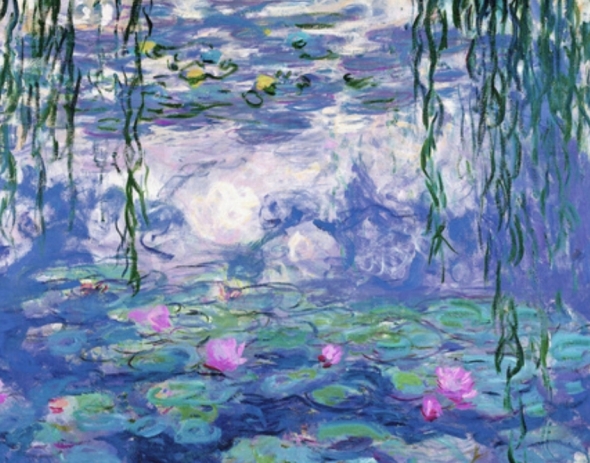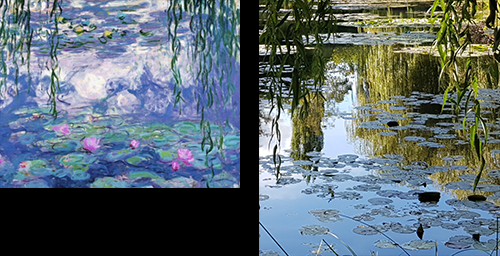Blog

Impressionism
September 28, 2018
Impressionism
New technology played a role in the development of the style.
Impressionists took advantage of the mid-century introduction of premixed paints in tin tubes (resembling modern toothpaste tubes), which allowed artists to work more spontaneously, both outdoors and indoors.
Previously, painters made their own paints individually, by grinding and mixing dry pigment powders with linseed oil, which were then stored in animal bladders.
A number of identifiable techniques and working habits contributed to the innovative style of the impressionists.
Although these methods had been used by previous artists and are often conspicuous in the work of artists such as FRANS HALS, DIEGO VELÁSQUEZ, PETER PAUL RUBENS, JOHN CONSTABLE, and J.M.W.TURNER. The impressionists were the first to use them all together, and with such consistency.
These techniques include:
• Short, thick strokes of paint quickly capture the essence of the subject, rather than its details. The paint is often applied impasto.
• Colours are applied side-by-side with as little mixing as possible, a technique that exploits the principle of simultaneous contrast to make the colour appear more vivid to the viewer.
• Grays and dark tones are produced by mixing complementary colours.Pure impressionism avoids the use of black paint.
• Wet paint is placed into wet paint without waiting for successive application to dry, producing softer edges and intermingling of colour.
• Impressionist paintings do not exploit the transparency of thin paint (glazes), which earlier artists manipulated carefully to produce effects. The impressionist painting surface is typically opaque.
• The paint is applied to a white or light-coloured ground. Previously, painters often used dark grey or strongly coloured grounds.
• The play of natural light is emphasised. Close attention is paid to the reflection of colours from object to object. Painters often worked in the evening to produce "effets de soir" - the shadowy effects of evening or twilight.
• In paintings made "en plein air" (outdoors), shadows are boldly painted with the blues of the sky as it is reflected onto surfaces, giving a sense of freshness previously not represented in painting.
Monet became famous exactly for painting these sky effects.
He painted the same scene in different seasons showcasing the changing effects of light.
From 1883 until his death in 1926, Monet was living in the village of Giverny, where he built a small home, a garden and a water garden.
The surroundings of those beautiful gardens served as the scene for his most famous work. Monet is well known for his paintings of the "water lilies" in his garden with the Japanese bridge in the backdrop.
When you visit Monet's house and garden in Giverny, you'll be walking on the same place that inspired Monet and you'll get to visit his charming pastel-colored house. Visiting Monet's Garden is the closest possible experience to bringing a magical painting into real life.
Is that a good enough reason to take this trip?

New technology played a role in the development of the style.
Impressionists took advantage of the mid-century introduction of premixed paints in tin tubes (resembling modern toothpaste tubes), which allowed artists to work more spontaneously, both outdoors and indoors.
Previously, painters made their own paints individually, by grinding and mixing dry pigment powders with linseed oil, which were then stored in animal bladders.
A number of identifiable techniques and working habits contributed to the innovative style of the impressionists.
Although these methods had been used by previous artists and are often conspicuous in the work of artists such as FRANS HALS, DIEGO VELÁSQUEZ, PETER PAUL RUBENS, JOHN CONSTABLE, and J.M.W.TURNER. The impressionists were the first to use them all together, and with such consistency.
These techniques include:
• Short, thick strokes of paint quickly capture the essence of the subject, rather than its details. The paint is often applied impasto.
• Colours are applied side-by-side with as little mixing as possible, a technique that exploits the principle of simultaneous contrast to make the colour appear more vivid to the viewer.
• Grays and dark tones are produced by mixing complementary colours.Pure impressionism avoids the use of black paint.
• Wet paint is placed into wet paint without waiting for successive application to dry, producing softer edges and intermingling of colour.
• Impressionist paintings do not exploit the transparency of thin paint (glazes), which earlier artists manipulated carefully to produce effects. The impressionist painting surface is typically opaque.
• The paint is applied to a white or light-coloured ground. Previously, painters often used dark grey or strongly coloured grounds.
• The play of natural light is emphasised. Close attention is paid to the reflection of colours from object to object. Painters often worked in the evening to produce "effets de soir" - the shadowy effects of evening or twilight.
• In paintings made "en plein air" (outdoors), shadows are boldly painted with the blues of the sky as it is reflected onto surfaces, giving a sense of freshness previously not represented in painting.
Monet became famous exactly for painting these sky effects.
He painted the same scene in different seasons showcasing the changing effects of light.
From 1883 until his death in 1926, Monet was living in the village of Giverny, where he built a small home, a garden and a water garden.
The surroundings of those beautiful gardens served as the scene for his most famous work. Monet is well known for his paintings of the "water lilies" in his garden with the Japanese bridge in the backdrop.
When you visit Monet's house and garden in Giverny, you'll be walking on the same place that inspired Monet and you'll get to visit his charming pastel-colored house. Visiting Monet's Garden is the closest possible experience to bringing a magical painting into real life.
Is that a good enough reason to take this trip?

Links:
• https://youtu.be/rjWx2WNXFF4
